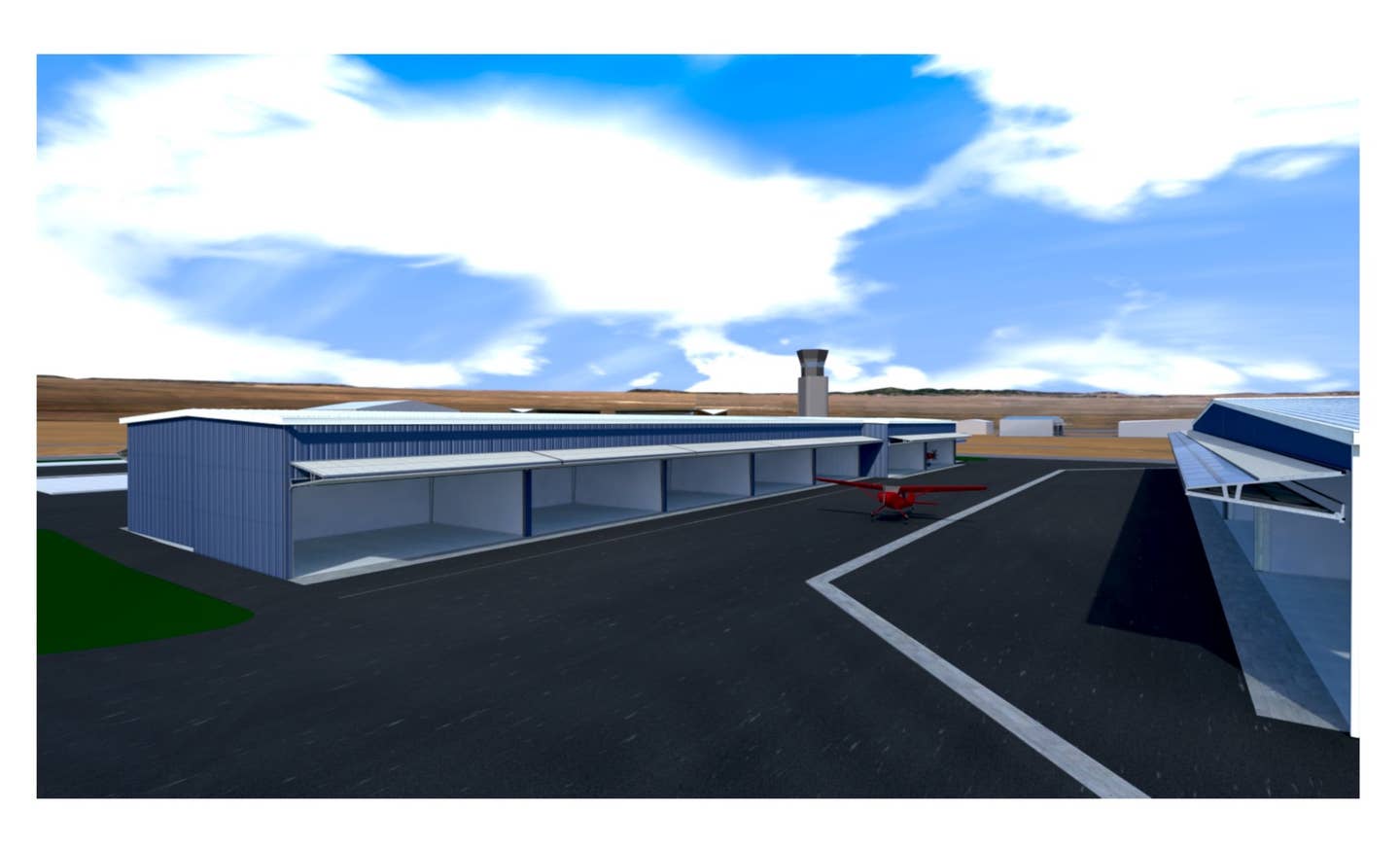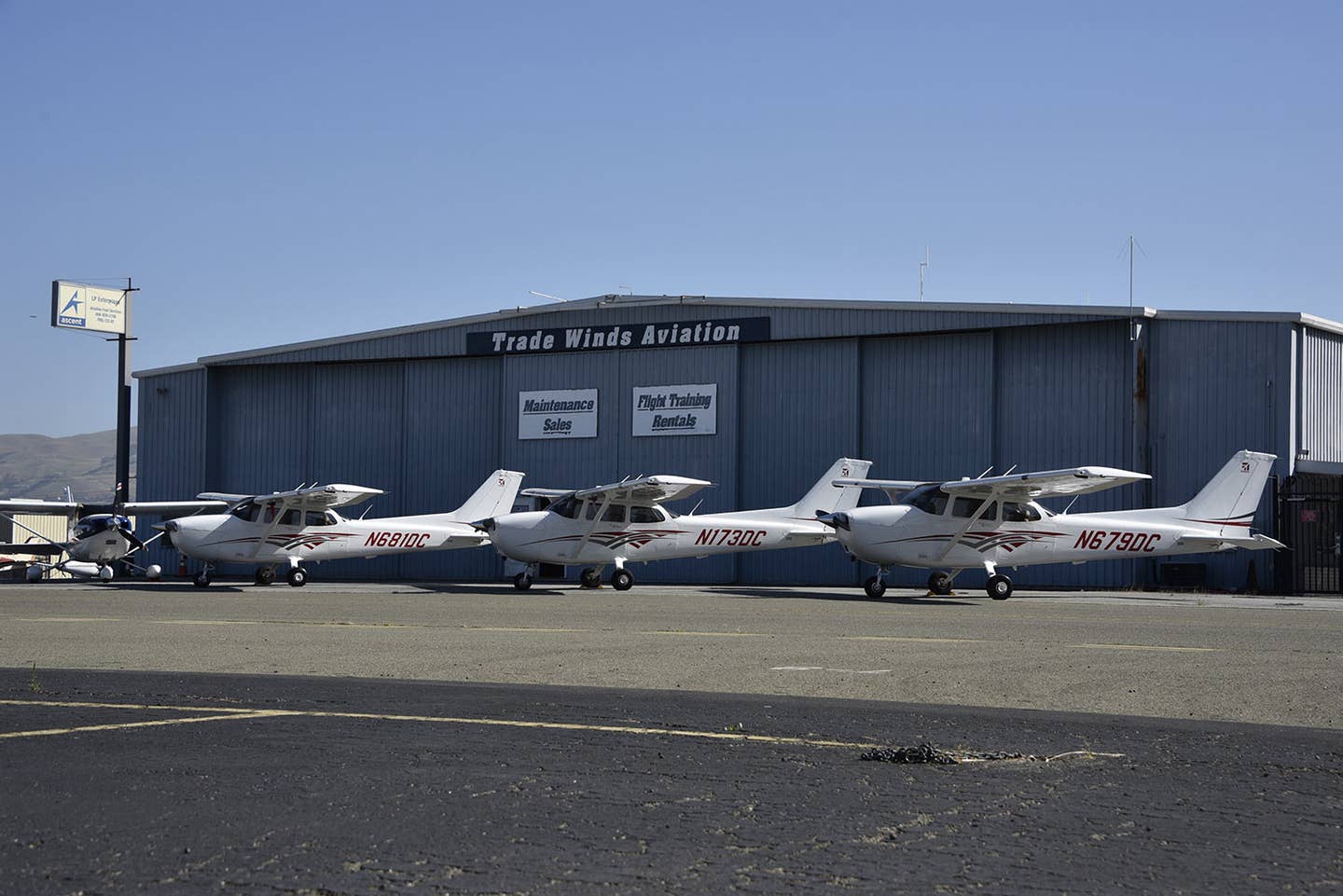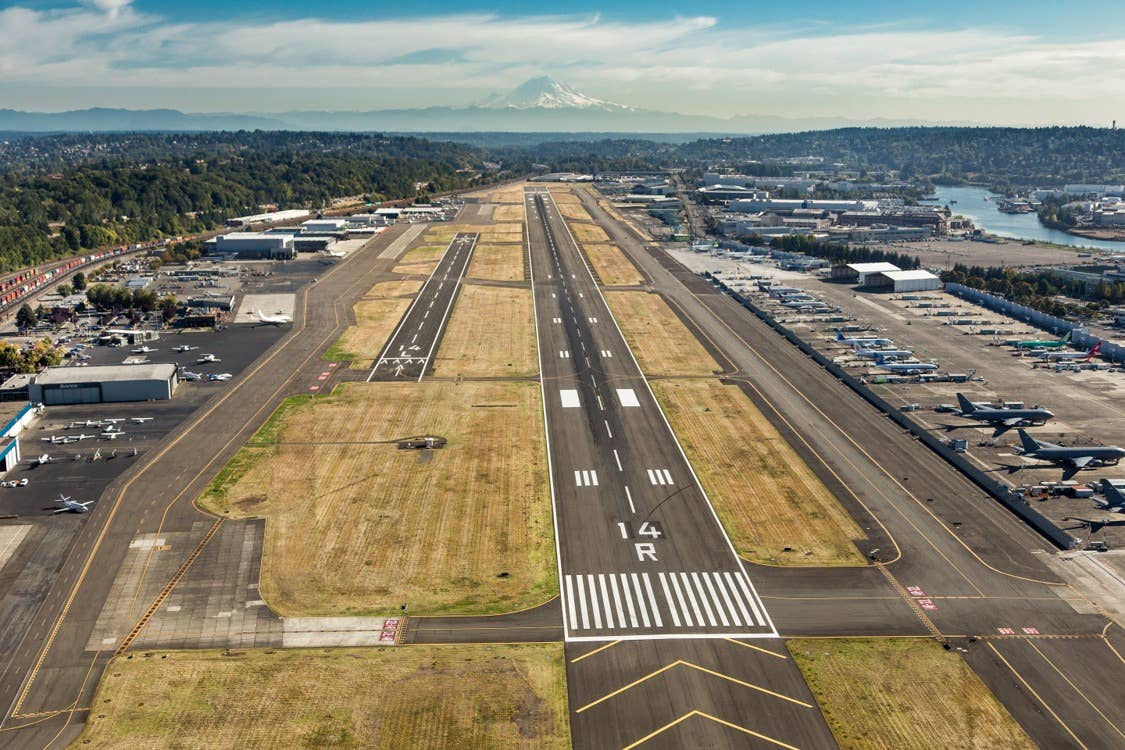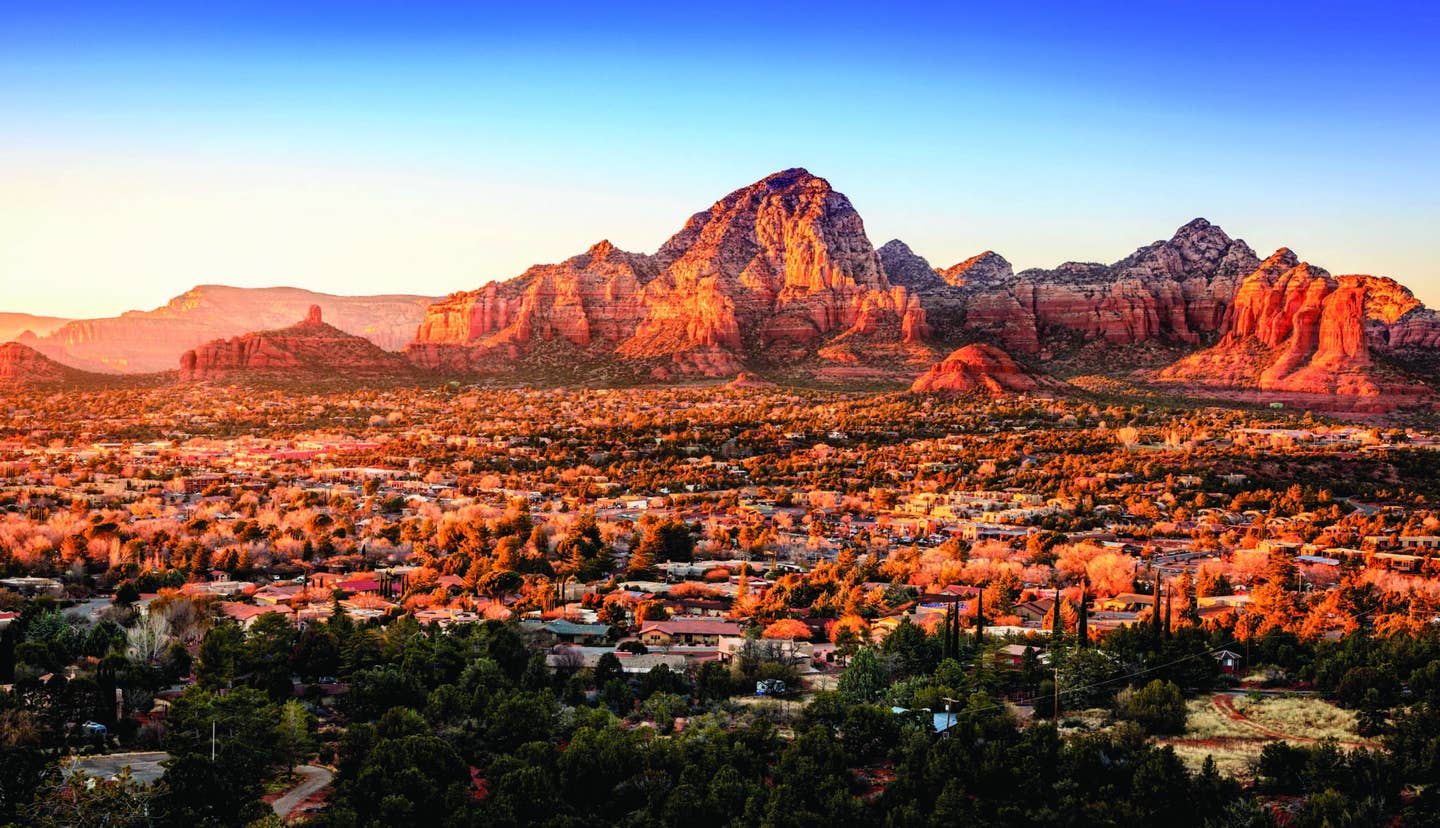Hungry for Shelter in New Mexico
A new development project is on track to add 46 hangar spaces at Double Eagle II Airport in Albuquerque.

Kenny and Jack Hinkes are the driving force behind High Flying Hangars at the Double Eagle II Airport (KAEG) in Albuquerque, New Mexico. This multiyear project has been a labor of love for the father and son, who are both pilots and real estate professionals.
“There are hangars, and then there are hangars,” Kenny Hinkes said. “We are building the hangars that we would build for ourselves. They are an all-steel building with a concave, concrete floor that goes to a floor drain. Then they are coated with hard deck fuel and hot tire-proof epoxy finish. That floor is the centerpiece of the hangar because now you have a place where you can wash, not only your airplane, but you can keep the whole hangar clean. There is also a three-quarter bathroom with hot water. Right now, there is only one bathroom at the airport. And it’s far away, depending on where you [have your hangar]."
The anticipated addition of 87,000 square feet of hangar space (spread between four rows) at the airport solves a problem experienced by the developers and dozens of other pilots.
“I got my private pilot license in 1970 and have been an active aviator for 53 years," Kenny said. "Fast forward, [and] I have five adult children. When the kids were little, we had family airplanes. They were mostly Bonanzas, but we also had a Cessna 205 and a 414. Even though we would fly and take trips to lots of places, none of the kids showed any interest in learning to fly. I always felt like that’s something that’s an internal process that you don’t put on anybody else.”
Although it didn’t happen right away, strong aviation influences during childhood eventually left their mark on Jack Hinkes.
“We started going to Oshkosh in 2006, and it was always a lot of fun,” Jack said. “But it wasn’t until maybe 2017 that I started to think, ‘Wow. Maybe I messed up and should have learned to fly when I was younger!’ So, I kept saying that I wanted to do it, buy a plane, and have my dad teach me how to fly, since he’s a CFI. But he would say, no, you have to really want it, and if you still want to do it later on, we will.”
Jack added that 2019 was the year when he finally had the time and resources to make his dream of flying a reality. He and his father set out to buy a trainer, settling on a red Skyhawk that they flew to Albuquerque from Northern California.
“Once we got it home, I called the local FBO at Double Eagle Airport,” Jack said. “I told them that I just bought a plane and was looking for hangar space, a T-hangar. The front desk person who answered kind of laughed at me and told me that they would put me down on the list. She said that there were about 57 people in front of me on the list.
“With how long the waiting list was, it was possible we never would have gotten in. Because the way it works out there is that people have friends and, whenever someone leaves a hangar, their buddy ends up in their old space, and the list never gets served. So, we ended up putting the plane in a community hangar [at Albuquerque International Sunport (KABQ), 11 nm away]. This was nice, because it’s full service, and they will pull the plane out, fuel it, and whatever. But you can’t do any maintenance on your plane or wash it. It’s a very controlled environment.”
The Hinkeses’ airplane was at this facility for six months before they decided there should be the option to keep their aircraft at their preferred home base. “Let’s go build some hangars, Jack!” is how the elder Hinkes remembers beginning a course-setting conversation in May 2020.
“My background is real estate development, and I build office buildings, condominiums, and shopping centers,” Kenny said. “I get that process, and it’s something that’s very familiar to me. So, we went over to the city of Albuquerque's office and met with the aviation department. They were very excited for us to build hangars.”
The High Flying Hangars project now stands as a testament to the father-son duo’s tenacity. From that initial meeting, it would take three years of active discussions to negotiate and approve lease terms mutually beneficial to the developing team and the city.
“Without going into all that detail, the federal funds that the government gives the sponsor are generally funneled almost exclusively to the large, international airports that are served by the airlines,” Kenny Hinkes said. “And the general aviation airports are definitely [secondary in] that system. So, we learned quickly that this was going to be an interesting process to navigate a lease and find a lender that understood how to finance construction and long-term, permanent financing for hangar buyers on leased land. I’m knowledgeable about how bankers think, since I’ve dealt with them for years, so we structured a deal that’s very compatible with community banks and credit unions. Our buyers all have 20-year, fixed-rate financing, if they need it.
“The other issue is title insurance. If you go to most GA airports, the people that are buying and selling hangars, quote, unquote, are just exchanging money in a handshake. They typically don’t have a real, constructive, equitable title to that improvement. It’s just a gentleman’s agreement, and that’s why it’s hard to get financing in most of those scenarios. We were able to get a recorded lease, a recorded sublease, [and] a recorded survey that gives title companies and lenders the kind of security that they need. With this, they feel comfortable advancing permanent funds to our buyers.
“We are excited about the project and have 46 hangars that we will develop over the next few years. We’ve sold out the first row and are taking reservations on the second row. Every month, we send out a newsletter to our buyers letting them know where we are at in the process. A recent response to our newsletter from a husband-and-wife team is priceless. They are both pilots and wrote to me that they are already so excited that they are decorating their hangar.”
As evidenced by the lengthy list the two encountered for their 172, Kenny said there is a voracious appetite for hangars in New Mexico’s most populous city.
“People are hungry for shelter,” he said. “I tell people this all the time, and it’s true for our development. There are people on the sidelines wanting to either upgrade from their older airplane or get into aircraft ownership. But they are not going to buy anything unless they have a great place to keep it. They are not going to leave a new plane outside…We just got a call from a local business owner who bought a new plane, saying that he needed somewhere to keep it right away. We are bringing in new permanent residents to Double Eagle Airport who do not presently exist because there is no shelter.”
The duo also pointed out the development is beneficial to the airport community in many ways, in addition to the obvious advantage of capturing some of the local demand for aircraft storage space.
“This is such a good thing for this airport because there are old, existing T-hangars that people are going to come out of and move into our development,” Kenny said. “That is going to free up some space for people that aren’t ready to buy a hangar that would like a space to lease. Since there’s nothing available right now, it will open up opportunities for people at different price points to have shelter for their planes. It is going to bring more maintenance and fuel sales to the local FBO. So, we have seen this as a really symbiotic relationship and a good thing for Double Eagle Airport.”

Sign-up for newsletters & special offers!
Get the latest FLYING stories & special offers delivered directly to your inbox






